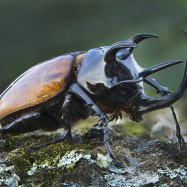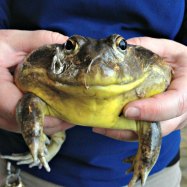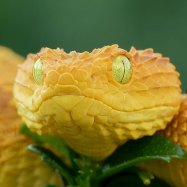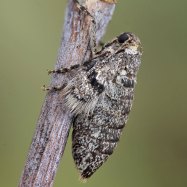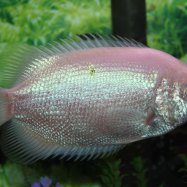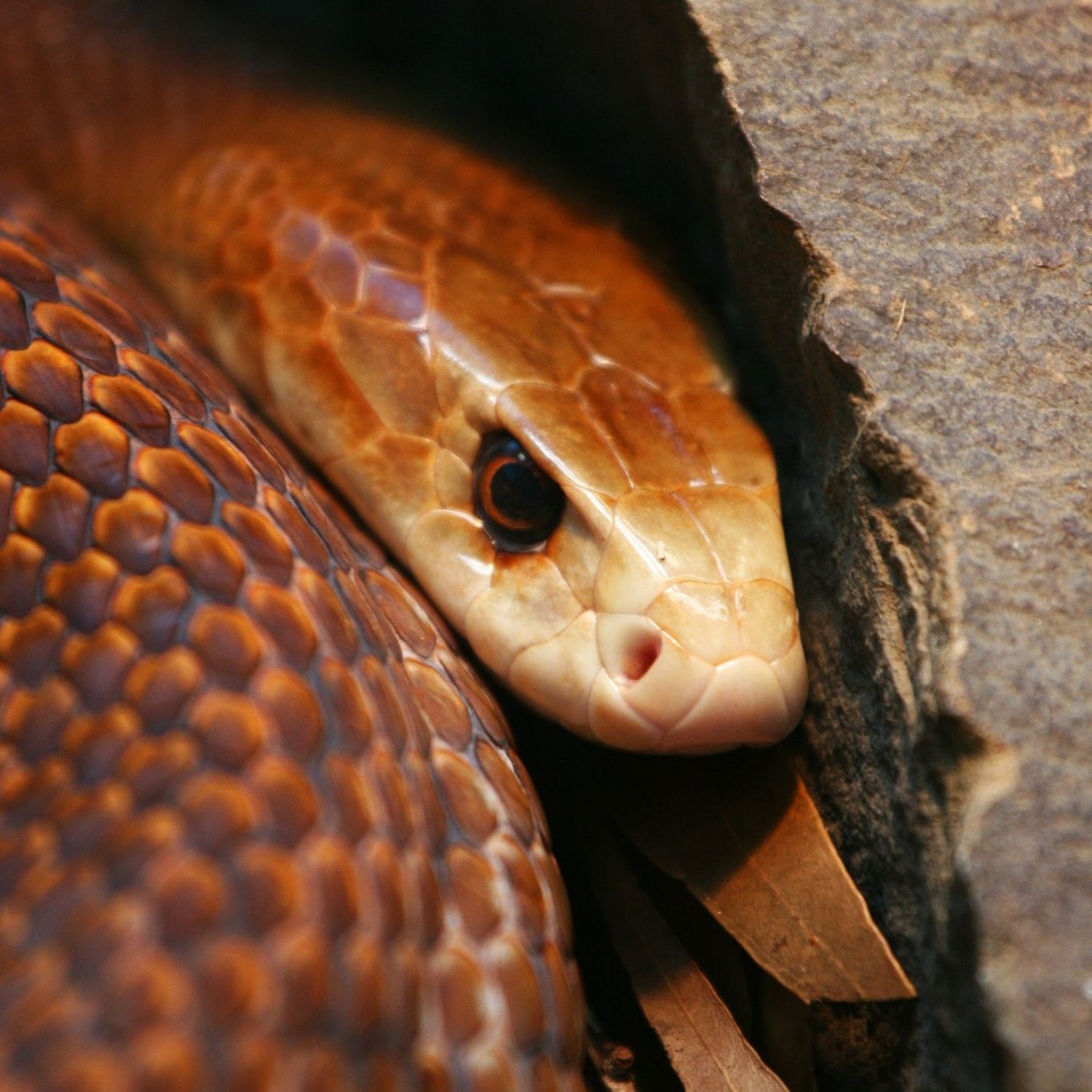
Inland Taipan
On average, 1.8 meters (5.9 feet) long
The Inland Taipan, also known as the fierce snake, can grow up to an average length of 1.8 meters (5.9 feet) long. Found in the inland regions of central Australia, its slender and medium-sized body shape is part of the Elapidae family. This highly venomous snake is not to be taken lightly, making it one of the most dangerous animals in the world.
Animal Details Summary:
Common Name: Inland Taipan
Kingdom: Animalia
Habitat: Semi-arid areas with grasslands, shrubs, and rocky outcrops
A Rare Encounter: The Inland Taipan
Deep in the heart of central Australia, in the semi-arid regions dotted with grasslands, shrubs, and rocky outcrops, resides a creature that has captured the imagination of many. Known as the Inland Taipan, this elusive snake has earned a reputation as one of the most venomous animals on the planet. But beyond its deadly bite, there is a delicate beauty and fascinating nature to this reptile that often goes unnoticed. Let's delve into the world of the Inland Taipan and discover what makes it such a remarkable and unique animal Inland Taipan.Scientifically known as Oxyuranus microlepidotus, the Inland Taipan belongs to the animal kingdom, phylum Chordata, and class Reptilia. It falls under the order Squamata, which comprises snakes, lizards, and worm lizards. As for its family, the Inland Taipan belongs to Elapidae, the family of venomous snakes that includes cobras and mambas.
The Inland Taipan is a highly specialized snake that has adapted to its harsh environment. It is primarily found in the inland regions of central Australia, specifically in the central and western parts of the country. This species is endemic to Australia, meaning it can only be found in this country and nowhere else in the world.
The animal's common name, Inland Taipan, is derived from its geographical distribution. The term "inland" refers to its preference for arid and semi-arid regions, while "taipan" comes from an aboriginal word meaning "large snake." However, this snake is also known by other names, such as the "fierce snake" or the "small-scaled snake Iguana."
When it comes to the physical appearance of the Inland Taipan, it may not immediately catch one's attention, as it blends in well with its surroundings. The overall coloration of this snake is light brown, sometimes with shades of orange or pink. Its body is slender and medium-sized, with an average length of 1.8 meters (5.9 feet). However, some individuals have been recorded to grow up to 2.5 meters (8.2 feet) in length.
Unlike other snakes, the Inland Taipan has a stocky head and a relatively thin neck. Its eyes are small and often have a dark appearance, which makes them stand out against its light-colored scales. Interestingly, this snake has a unique feature that sets it apart from other snakes – its nostrils are located on the top of its snout. This adaptation allows the Inland Taipan to breathe while partially buried in sand, which is one of its preferred hunting strategies.
As a member of the Elapidae family, the Inland Taipan is a carnivorous reptile that preys on small rodents, birds, and other reptiles. It is an active hunter and relies on its incredible sense of smell and specialized heat-sensing organs to detect prey. Once the prey is captured, the snake's venom, which is highly toxic, quickly immobilizes and kills it. This venom is also the reason why the Inland Taipan is considered the most venomous snake in the world.
The venom of the Inland Taipan is a potent neurotoxin that targets the nervous system of its prey, causing paralysis and respiratory failure. It is estimated that one bite from an Inland Taipan contains enough venom to kill 100 adult humans. However, despite its deadly reputation, the Inland Taipan is not an aggressive animal and will only strike in self-defense or when hunting for prey. It would much rather escape a threat than confront it, making it a shy and elusive animal.
The occurrence of bites from the Inland Taipan is rare, mainly due to its low population density and preference for remote habitats. However, when a bite does occur, it can have severe consequences. The venom of the Inland Taipan can kill an adult human within 45 minutes if left untreated. Fortunately, an antivenom is available for this species, which has been highly successful in saving human lives.
Apart from being a formidable predator, the Inland Taipan also plays a crucial role in maintaining the balance of its ecosystem. As a top predator, this snake helps regulate the population of its prey, preventing any negative impacts on the environment.
Despite its unique characteristics and biological significance, the Inland Taipan is facing several threats that put its survival at risk. Habitat destruction due to agriculture and urbanization, accidental deaths from vehicles, and illegal collection for the exotic pet trade are some of the major factors that contribute to the decline in population.
To ensure the continued existence of these magnificent creatures, Australia has implemented strict conservation measures to protect the Inland Taipan. The snake is listed as a protected species, and it is illegal to harm, collect, or trade it without the proper permits. Efforts are also being made to educate the public on the importance of this species in the ecosystem and to promote coexistence with these snakes.
If you happen to encounter an Inland Taipan in the wild, it is crucial to remember that it is a protected and highly venomous species. The best course of action is to admire it from a distance and appreciate its beauty and uniqueness. Never try to handle or interact with this snake, as it can result in serious harm to both the animal and humans.
In conclusion, the Inland Taipan is a creature of great interest and wonder. Its ability to survive and thrive in the harsh conditions of central Australia, its impressive hunting techniques, and its deadly venom all add to its allure. However, this animal also faces many challenges to its survival, making it a valuable reminder of the impact of human actions on the delicate balance of nature. As we continue to learn more about this elusive snake, let us also strive to protect and conserve this remarkable creature for generations to come.

Inland Taipan
Animal Details Inland Taipan - Scientific Name: Oxyuranus microlepidotus
- Category: Animals I
- Scientific Name: Oxyuranus microlepidotus
- Common Name: Inland Taipan
- Kingdom: Animalia
- Phylum: Chordata
- Class: Reptilia
- Order: Squamata
- Family: Elapidae
- Habitat: Semi-arid areas with grasslands, shrubs, and rocky outcrops
- Feeding Method: Carnivorous
- Geographical Distribution: Central and Western Australia
- Country of Origin: Australia
- Location: Inland regions of central Australia
- Animal Coloration: Overall light brown, sometimes with shades of orange or pink
- Body Shape: Slender and medium-sized
- Length: On average, 1.8 meters (5.9 feet) long
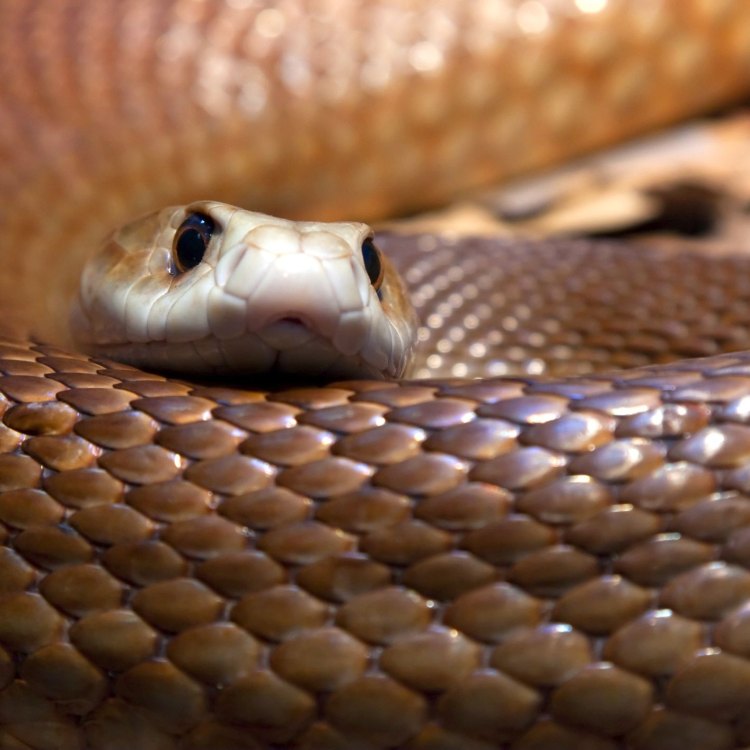
Inland Taipan
- Adult Size: Up to 2.5 meters (8.2 feet) long
- Average Lifespan: Around 10 years in the wild
- Reproduction: Sexual
- Reproductive Behavior: No specific information available
- Sound or Call: No specific information available
- Migration Pattern: Non-migratory
- Social Groups: Solitary
- Behavior: Mostly diurnal, active during the day
- Threats: Habitat loss, road mortality, and persecution by humans
- Conservation Status: Least Concern (IUCN)
- Impact on Ecosystem: As a top predator, they help regulate prey populations
- Human Use: None known
- Distinctive Features: Has the most toxic venom of any land snake in the world
- Interesting Facts: The venom of the Inland Taipan can kill an adult human within 45 minutes if left untreated
- Predator: No specific information available
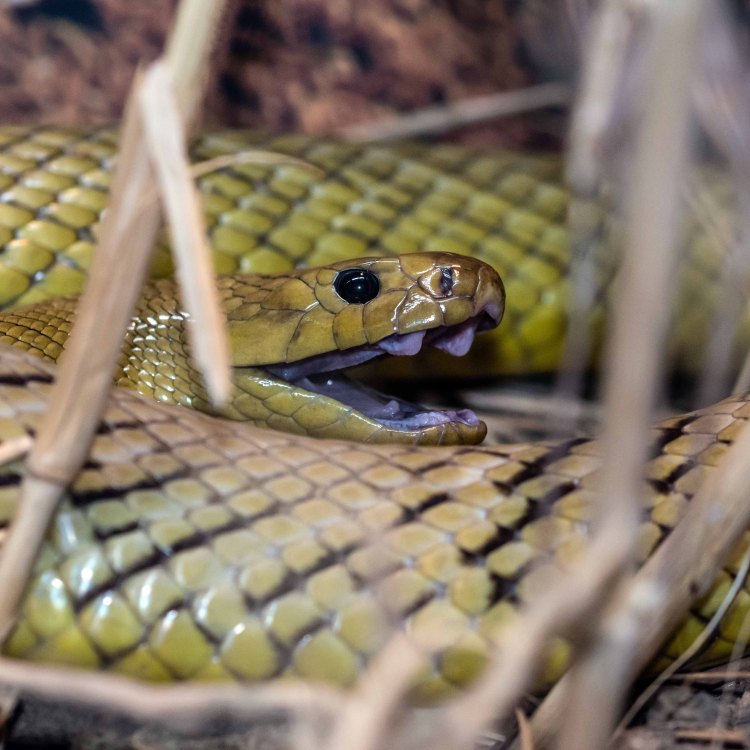
Oxyuranus microlepidotus
The Mighty Inland Taipan: A Closer Look at the World's Most Venomous Snake
Deep in the heart of the Australian outback lies a creature that strikes fear into the hearts of many - the Inland Taipan. Widely considered the most venomous snake in the world, this reptile is the stuff of nightmares for those with a phobia of snakes. But beyond its deadly reputation, the Inland Taipan is a fascinating creature with many unique features and behaviors. In this article, we'll take a closer look at this fearsome serpent and explore its role in our ecosystem PeaceOfAnimals.Com.The Inland Taipan, also known as the fierce snake, is a species of elapid snake native to central and eastern Australia. It is a solitary creature, often found in the arid and semi-arid regions of the outback, where it blends in perfectly with its surroundings. It is a beautifully designed creature, with a sandy brown or olive-green body, marked with darker stripes or spots. But don't let its unassuming appearance fool you - this snake is highly venomous and should be approached with caution.
Let's start by looking at some of the basic facts about the Inland Taipan. It can grow up to 2.5 meters (8.2 feet) long, making it one of the longest snake species in the world. However, its average length is around 1 Indri.8 meters (5.9 feet). As for its lifespan, in the wild, it can live up to 10 years, though this may vary depending on factors such as food availability and environmental conditions.
When it comes to reproduction, the Inland Taipan is a sexual species, with males and females coming together to mate during the breeding season, which occurs between July and November. However, beyond this general information, not much is known about their reproductive behavior. Due to their solitary nature and remote habitat, it is challenging to observe and study their mating habits.
Another interesting fact about the Inland Taipan is that it is non-migratory, meaning it does not travel long distances in search of food or during breeding season. Instead, it stays within its home range, which can range from 7 to 14 hectares (17 to 34 acres). This behavior is common among many snakes, as they are efficient at conserving energy and only moving when necessary.
Speaking of social behavior, the Inland Taipan is a solitary creature, meaning it prefers to live and hunt alone. It is most active during the day and spends its time basking in the sun, hunting, and sheltering in its burrow. Its diurnal nature makes it easier to spot in the wild, but that doesn't mean it's easy to approach. This snake is known to be shy and will quickly slither away at the first sign of danger.
But what exactly is the danger posed by the Inland Taipan? As mentioned before, it has the reputation of being the most venomous snake in the world. Its venom, which it delivers through a pair of large and fixed fangs, is significantly more potent than that of other highly venomous species, such as the Black Mamba or the King Cobra. In fact, it has the most toxic venom of any land snake in the world, with just one drop being enough to kill 100 adult humans. The venom affects the nervous system, disrupting communication between nerves and muscles, and can lead to paralysis and even death.
But despite its potent venom, the Inland Taipan is not an aggressive species and will only inject venom as a last resort. It will first try to flee if threatened, only biting if it feels cornered and has no other option. And even if it does bite, it can often control the amount of venom it injects, so not all bites are necessarily fatal. However, it is essential to seek medical attention immediately after being bitten by this snake, as without the antivenom, death can occur within 45 minutes.
It is fascinating to note that despite its fatal venom, the Inland Taipan plays an important role in our ecosystem. As a top predator, it helps to regulate prey populations, preventing them from overgrazing and damaging the delicate balance of the ecosystem. Its presence also helps to maintain biodiversity, as it keeps the population of small mammals, birds, and reptiles in check.
Unfortunately, like many other species, the Inland Taipan faces threats from human activities. Habitat loss due to land development and road mortality from vehicles are significant concerns for this species. In some areas, the fear of this snake has led to persecution, as people kill them out of fear or misunderstanding. However, thanks to conservation efforts and protective measures, their population is considered stable, and they are currently classified as Least Concern on the IUCN Red List.
As for human use, there is no known use for this venomous snake. Unlike other reptiles, it is not kept as a pet, nor is its venom used for any medicinal or traditional purposes. It is simply admired from a safe distance by snake enthusiasts and researchers.
Apart from its unique features and behaviors, the Inland Taipan also has some interesting facts that are worth noting. For instance, its deadlayer has a sandpaper-like texture, which helps it retain moisture and prevent dehydration in its dry habitat. It also has a highly sensitive tongue, which it uses to explore its environment and gather information about prey and potential threats.
Another interesting fact is that the Inland Taipan is considered a primitive snake, as it has retained some characteristics of its ancestors, such as having two lungs instead of just one like other modern snakes. This fact has helped scientists better understand the evolution of snakes and their adaptations to different environments.
As for predators of the Inland Taipan, there is not much information available. It is assumed that other large mammals, such as dingoes, may occasionally prey on them, but there is no significant threat to their population from predators.
In conclusion, the Inland Taipan is a fascinating yet feared creature that deserves our respect and admiration. Despite its deadly venom, it plays an essential role in our ecosystem and contributes to the delicate balance of nature. As humans, it is our responsibility to ensure the survival of this species by protecting its habitat and learning to coexist with it peacefully. And although it may be the most venomous snake in the world, it is also a beautiful example of the wonders of the natural world.
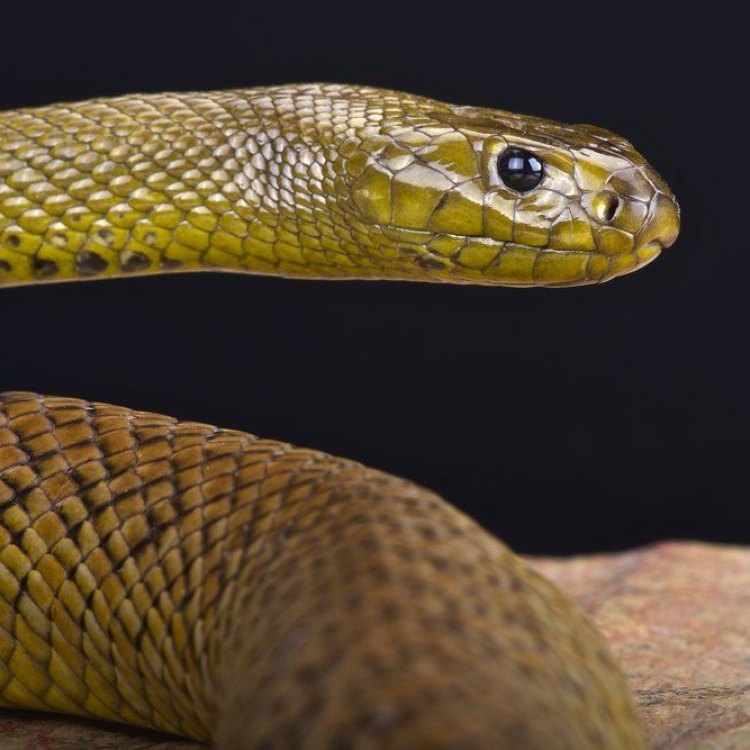
A Rare Encounter: The Inland Taipan
Disclaimer: The content provided is for informational purposes only. We cannot guarantee the accuracy of the information on this page 100%. All information provided here may change without prior notice.


